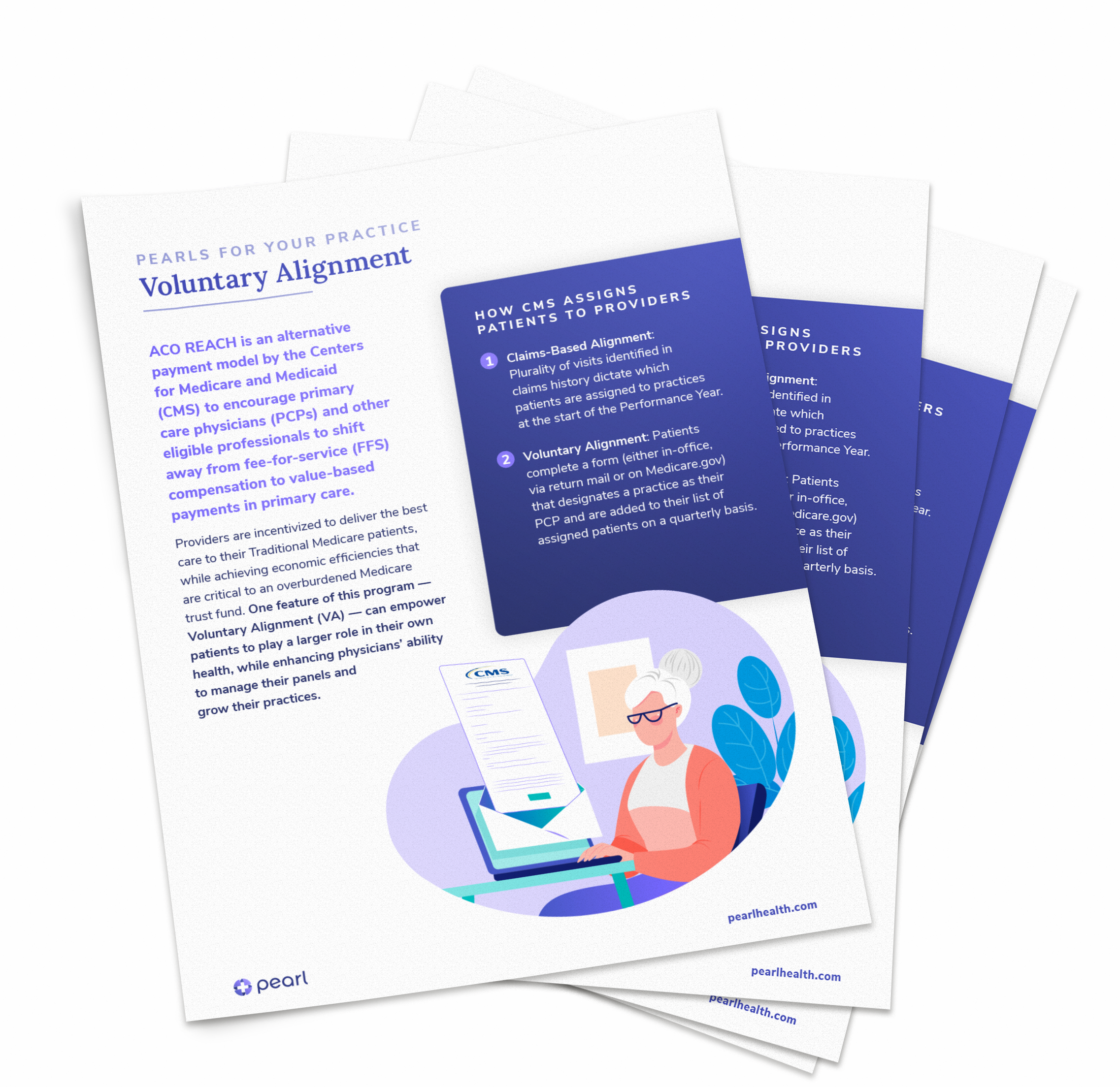Voluntary Alignment
The ACO REACH Model — one of the newest and most innovative value-based care models from the Centers for Medicare and Medicaid Services (CMS) — aims to improve clinical outcomes and reduce Total Cost of Care (TCOC). Providers are incentivized to deliver the best care to their Traditional Medicare patients, while achieving economic efficiencies that are critical to an overburdened Medicare trust fund. One feature of this program — Voluntary Alignment — can empower patients to play a larger role in their own health, while enhancing physicians’ ability to manage their panels and grow their practices.
Historical Context for Alignment
It is important to understand Voluntary Alignment in the context of value-based care. Value-based models are built on a commitment to a panel of patients determined by attribution, typically from claims. Claims-based alignment has traditionally had two flavors — prospective and retrospective. Prospective alignment sees beneficiaries assigned to a risk-bearing organization (like an Accountable Care Organization, also known as an “ACO”) based on services administered prior to the performance year in question. Conversely, retrospective alignment assigns beneficiaries based on services occurring during the performance year.1
Claims-based alignment is the way in which the majority of patients are aligned to their provider in ACO REACH, though there are certain limitations. Many patients do not have a clear pattern in claims that allows them to be attributed to one physician. Moreover, the nature of claims-based alignment is at odds with patient choice beyond its implicit look-back nature. Although claims-based alignment affords more patients the opportunity to participate in value-based arrangements, and makes participation in these models easier for providers, there has been a clear need to outfit populations with more choices.
Benefits of Voluntary Alignment
- Visiting mymedicare.gov (Electronic Voluntary Alignment)
- Filling out a form and returning it to their provider (Paper Voluntary Alignment)

For Patients: Benefits of Voluntary Alignment
Voluntary Alignment has many advantages for patients. For patients, declaring a primary care physician to CMS yields greater control over care and allows patients to benefit from the various programs a value-based entity may choose to enact. In contrast to other value-based programs, Voluntary Alignment allows patients to align with a REACH ACO’s participating provider during the performance year.
This feature grants patients access to enhanced benefits like dental vouchers, reduced co-pays, and meals as medicine in shorter order than aforementioned programs that only allow annual enrollment. Further, studies have shown that increased patient involvement in care decision making improves satisfaction and outcomes.2 Voluntary Alignment allows patients to seize control of their care by dictating their provider of choice, increasing involvement in care decisions and forging a close relationship that can improve outcomes and satisfaction for all parties. Additional details on the benefits for patients and how to voluntarily align with your provider can be viewed in this short video.
For Providers: Benefits of Voluntary Alignment
For providers, Voluntary Alignment enables greater coordination of care, promoting enhanced clinical success and more efficient transitions of care. Aligned beneficiaries are more inclined to share their status with their provider, particularly in the event of receiving care outside of their normal geography. Enhanced visibility into their patient panel also gives providers a leg up on developing care plans. Additionally, adding attributed patients increases both the monthly Per Member Per Month (PMPM) paid to providers and shared savings potential at the end of year, creating a financial incentive for providers to help account for patients.
For the U.S. Healthcare System: Benefits of
Voluntary Alignment
Voluntary Alignment has the potential to pay dividends for the U.S. healthcare system as a whole. Primary care physicians are experts in managing multiple treatments, medications, and the interactions between those channels. Good primary care can save tremendously on downstream spending by improving providers’ ability to affect prevention, coordination, and steerage. Aligning patients with their primary care provider of choice can reduce healthcare spending, improve outcomes, and pave the way for a more coordinated and efficient healthcare system.
Process and Considerations
At Pearl Health, we’re excited to work with our physician partners to help them succeed in ACO REACH. Voluntary Alignment is just one of the many exciting features of this revolutionary model that has potential to improve outcomes and lower costs.
Explore more resources like this by visiting Pearl’s blog.

Complimentary Report
Voluntary Alignment Guide
Download Pearl’s guide to Voluntary Alignment in ACO REACH to learn more about how it can empower patients and enable physicians
- Milliman, “Prospective and Retrospective Assignment in MSSP and Beyond,” 2020.
- Healthcare Value Hub, “The Consumer Benefits of Patient Shared Decision Making,” 2019.


